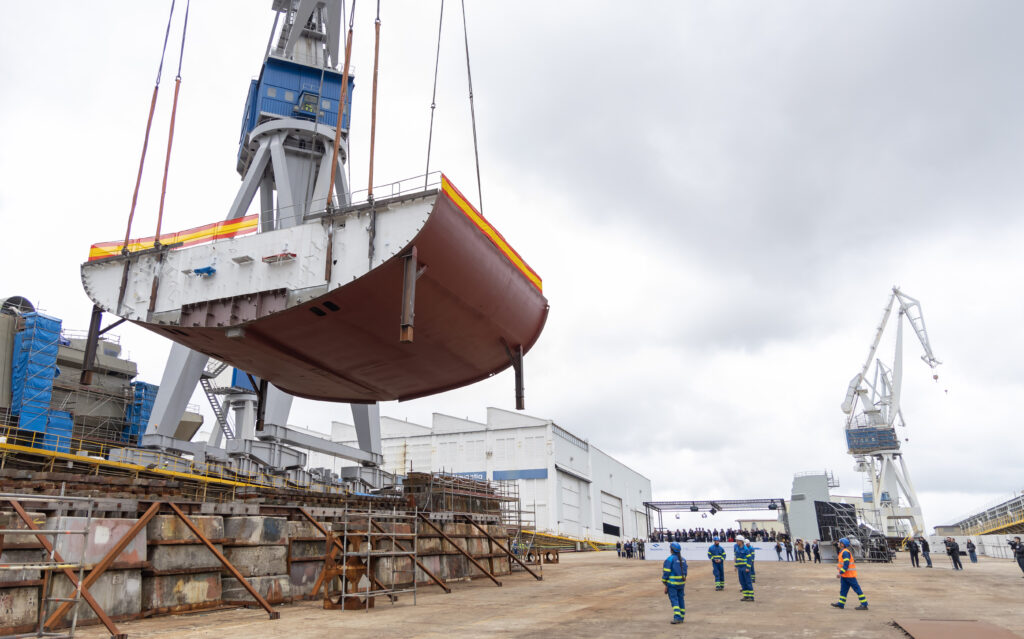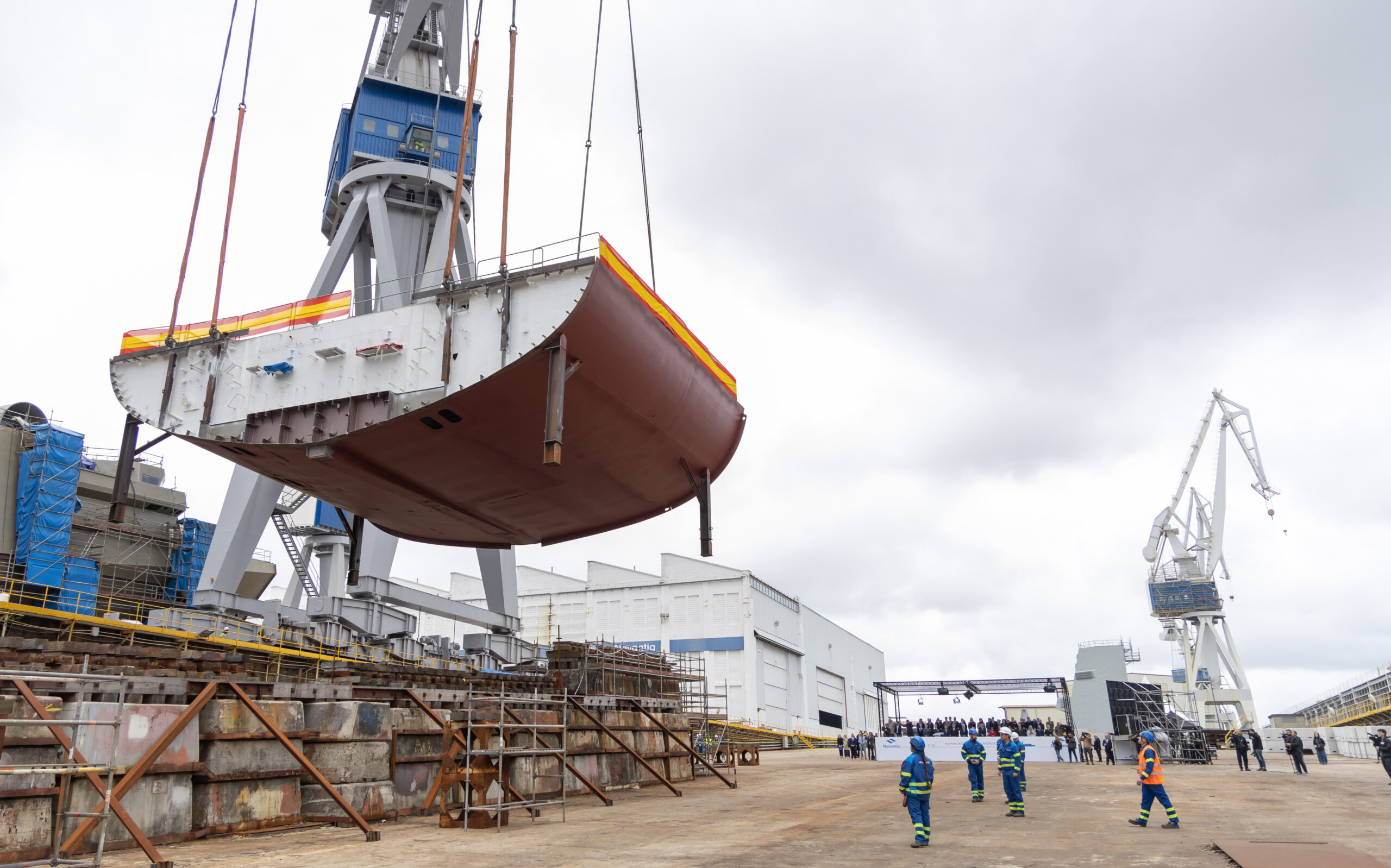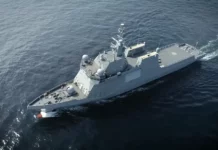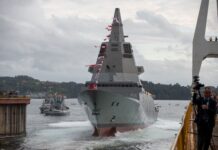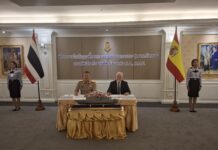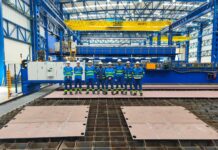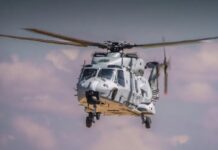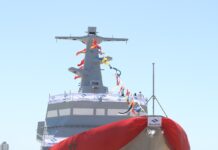Spanish shipbuilder Navantia’s hosted a double ceremony at its shipyard in Ferrol (A Coruña) on 25 April 2025 in which the construction of the frigate F113, the third ship of the F110 series, began and the keel of frigate F112 was laid.
Both milestones, presided over by Spanish Defence Minister Margarita Robles, demonstrate the progress of the F110 programme, which is building a series of five new-generation frigates for the Spanish Navy and which Navantia pointed out is so far months ahead of schedule. Construction of frigate F113 began three months ahead of the scheduled timeline, while the laying of the keel of F112 is seven months ahead of the agreed schedule with the Spanish Ministry of Defence.
Frigate F113, which will be named Menéndez de Avilés, has begun its construction in a robotic welding cell: a product of the shipyard’s Innovation and Robotics Centre aimed at digital transformation and process automation.
This capability will automate the construction of certain components using techniques such as artificial vision and flexible programming, saving manufacturing time and improving welding quality.
Navantia is also developing a new Digital Block Factory that will be fully working in 2026 and will start with blocks for frigate F113.
Meanwhile, the keel of frigate F112 – the second ship of the programme, to be named Roger de Lauria – has been laid. With this milestone frigate F112 leaves the workshop and begins construction on the slipway. From which it will be launched in 2026.
The keel of F112 was placed next to the first of the series, F111 (to be called Ramon Bonifaz), on which over 85% of block assembly has been conducted. The ships is being prepared for launch in the coming months.
Spain’s F110 frigate programme, which was initiated in 2019, covers the construction of five units worth EUR 4.325 million. The frigates have been designed as versatile escort ships, with anti-aircraft, anti-surface and anti-submarine capabilities, that are able to operate in combination with other units on tasks ranging from maritime security to supporting civil authorities.
The F110 design is seen as a qualitative leap in terms of both the Spanish Navy’s capabilities and the industrial and technological potential of Navantia and its industry partners. It thus contributes to Spain’s strategic autonomy and to having a leading industrial and technological base while also opening new export opportunities.
The programme also incorporates a ‘digital twin’ capability, which will make the Ferrol shipyard an international reference in frigate design and construction, according to Navantia. The digital twin, designed in close collaboration with the Spanish Navy and the Directorate General of Armament and Material (DGAM) of the Spanish Ministry of Defense, is a virtual replica of the ship that is fed in real time with information from data permanently supplied by a network of sensors distributed throughout the ship, constituting a cyber-physical system that, using behaviour models and technologies such as cloud computing and machine learning, will support the maintenance and operation of the frigates even when they are thousands of miles away.
